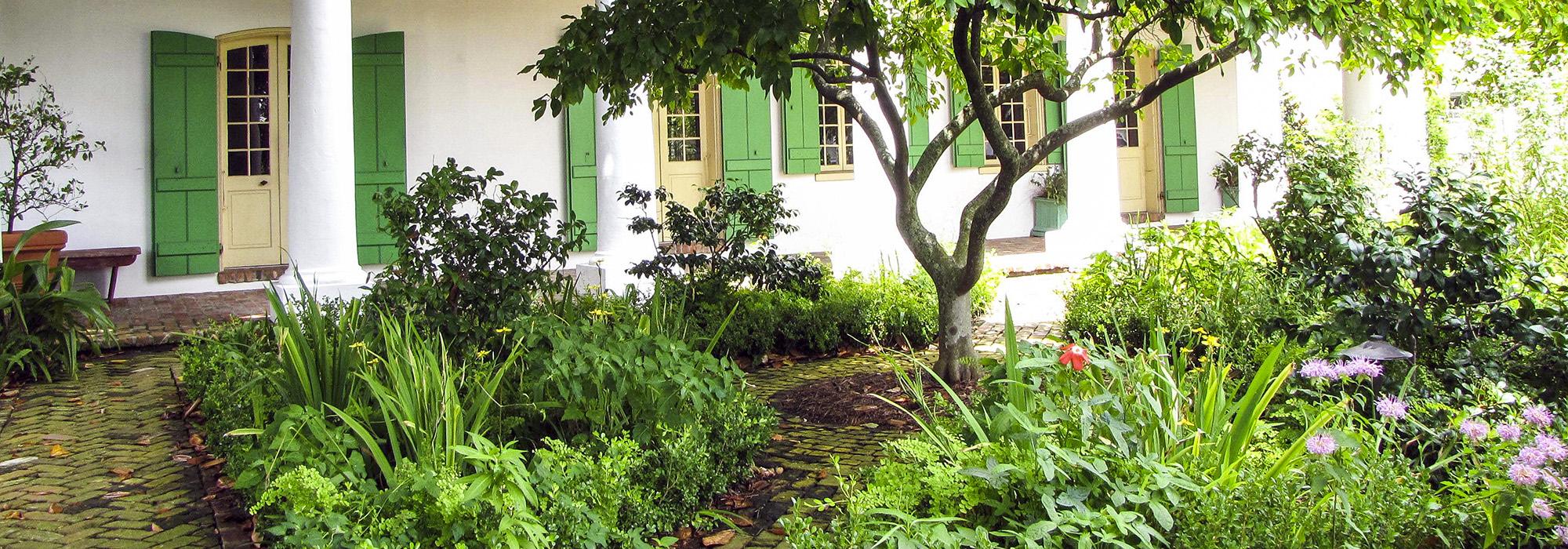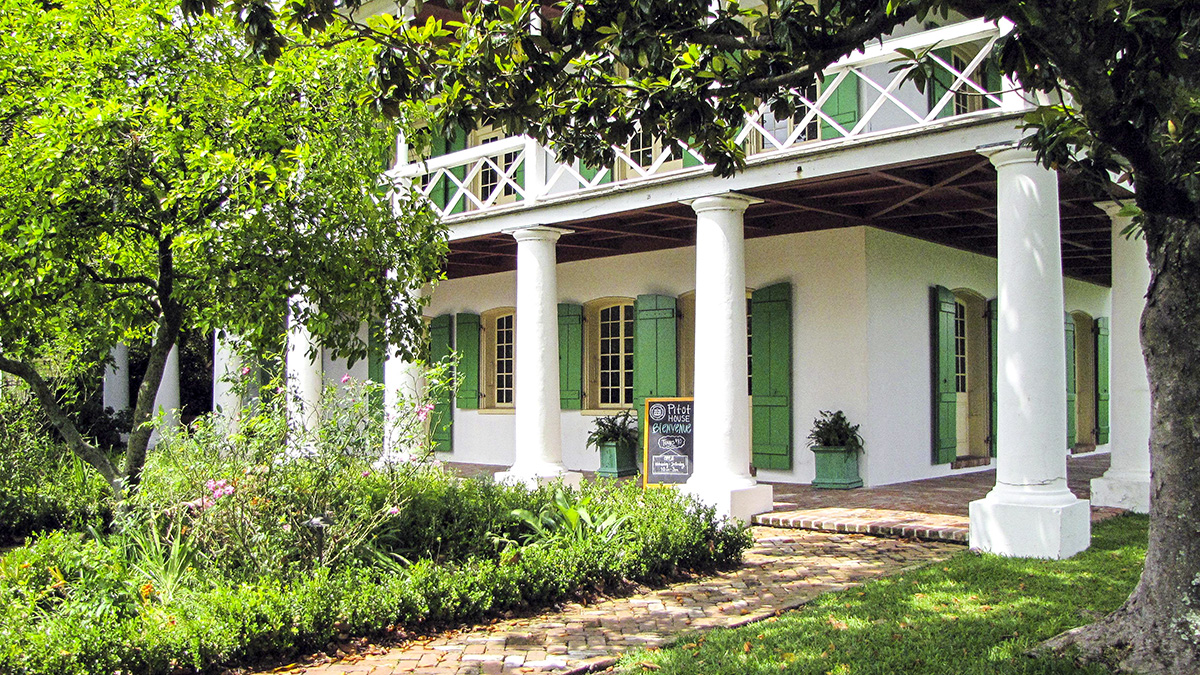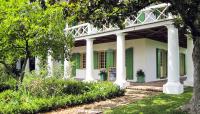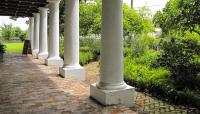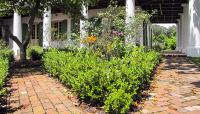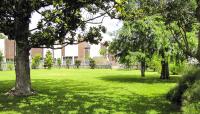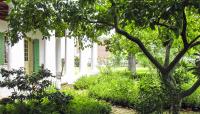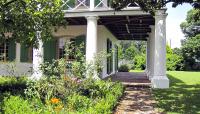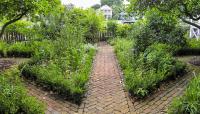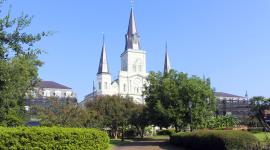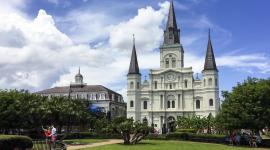Landscape Information
Located on the banks of Bayou St. John, the Pitot House was built in 1799 by Spanish colonial official Don Bartólome Bosque as a country retreat. The house is named after James Pitot, the first mayor of the newly incorporated American city of New Orleans, who resided in the house from 1810 to 1819. In 1904, Mother Frances Xavier Cabrini, the first American-born Catholic saint, purchased the house, which became a convent in 1930. Slated for demolition in 1963, the house was purchased by the Louisiana Landmarks Society, which moved it some 200 feet east of its original location on Moss Street. It was restored in the 1960s and opened to the public in 1973.
Little is known about the garden that would have existed at the house’s original location. In the 1960s, landscape architect Christopher Friedrichs worked with architect Samuel Wilson, Jr. to develop a garden design that featured a parterre arrangement of dwarf periwinkle with dwarf azalea borders and gravel paths between the beds. In the 1990s, Lydia H. Schmalz and Lyn J. Tomlinson designed and installed a garden including some of the crops typically grown in Louisiana during the colonial origins of the Pitot House, including sugarcane, okra, cotton, tobacco, indigo, grapes, and peppers. In the 2000s, landscape architect Lake Douglas developed a site plan for the gardens, replacing beds of dwarf periwinkle with native plants, including the Louisiana iris, rudbeckia, and coneflower. The brick walkways form geometric patterns around the beds and lead to two encircled grapefruit trees that reach a second-floor balcony. Adjacent to the garden is a large, open lawn surrounded by cypress, magnolia, and citrus trees. The Pitot House was added to the National Register of Historic Places in 1971.



